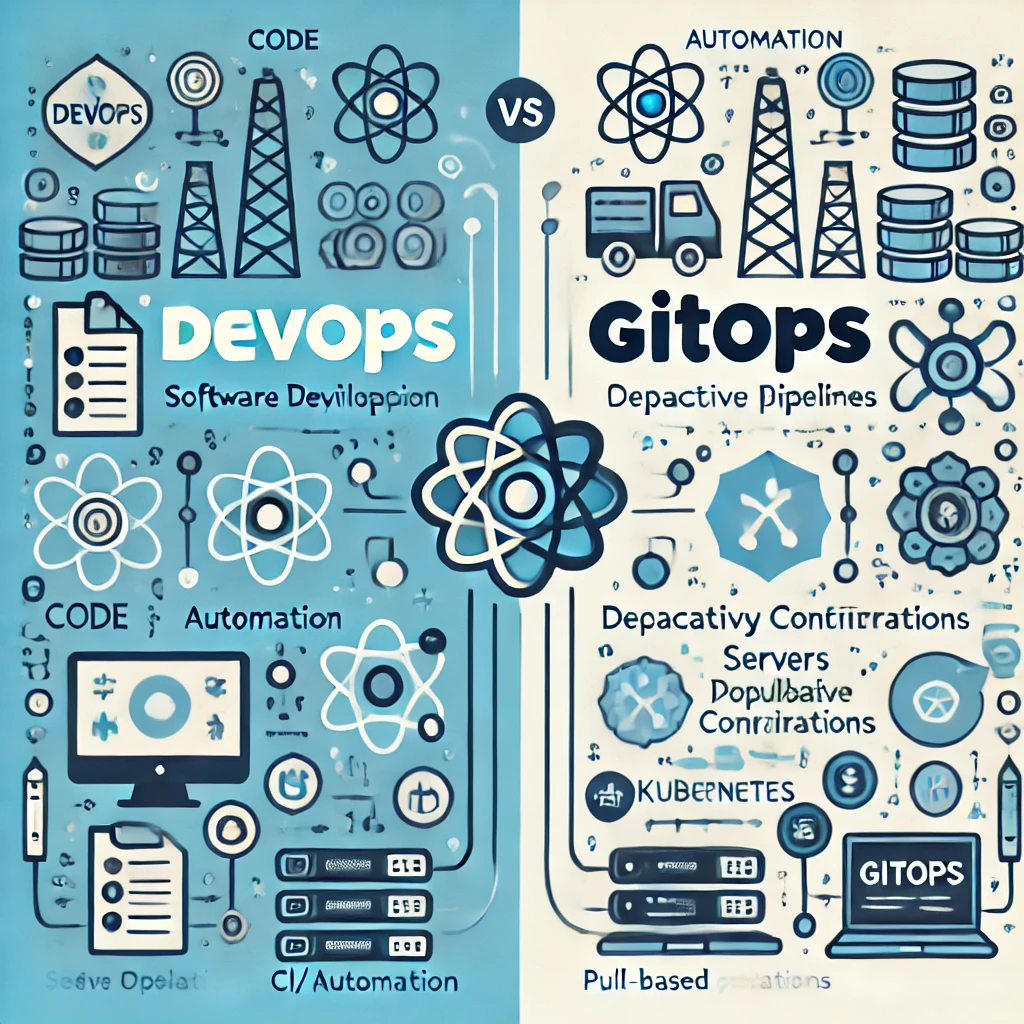GitOps vs. DevOps: What’s the Difference?

In the world of modern software development, two methodologies stand out as essential for delivering fast, reliable, and scalable software: DevOps and GitOps. While both share common goals of automation, continuous delivery, and improving developer efficiency, they approach the problem differently. Here’s a deep dive into how they differ and what each offers.
What is DevOps?
DevOps is a cultural and technical shift that integrates software development (Dev) and IT operations (Ops) to improve collaboration, efficiency, and the speed of software delivery. Its core principle is to break down silos between developers and operations teams, ensuring that teams work together to automate and streamline the software development lifecycle (SDLC).
Key Principles of DevOps:
1. Automation: Automation of tasks like testing, deployment, and infrastructure provisioning to reduce human errors and improve consistency.
2. Continuous Integration/Continuous Delivery (CI/CD): Regularly integrating code changes and automatically testing and deploying them, ensuring faster and more reliable releases.
3. Monitoring & Feedback Loops: Real-time monitoring of applications and infrastructure to detect and fix issues proactively.
4. Collaboration & Shared Responsibility: Developers and operations work together, sharing ownership of the entire system lifecycle.
DevOps Tools:
Common tools associated with DevOps include:
• CI/CD tools: Jenkins, CircleCI, GitLab CI
• Infrastructure-as-Code (IaC): Terraform, Ansible
• Containerization: Docker, Kubernetes
• Monitoring & Logging: Prometheus, Grafana, ELK Stack
What is GitOps?
GitOps is a subset of DevOps that specifically focuses on using Git as the single source of truth for both application code and infrastructure configuration. GitOps extends Infrastructure-as-Code (IaC) by using Git workflows to automate infrastructure deployment and management. It allows teams to manage infrastructure and application configurations declaratively and synchronize the desired state with the actual state in production.
Key Principles of GitOps:
1. Declarative Infrastructure: Desired infrastructure state is defined declaratively (e.g., Kubernetes manifests, Terraform files) and stored in Git.
2. Version Control: Infrastructure and application changes are tracked in Git, providing a clear audit trail and enabling easy rollback of changes.
3. Automated Sync: GitOps tools continuously monitor the repository and ensure the deployed infrastructure matches the desired state described in Git. If it doesn’t, it reconciles the differences.
4. Pull-based Deployments: Rather than manually pushing changes, GitOps tools automatically pull changes from Git and apply them to the environment.
GitOps Tools:
Popular tools in the GitOps ecosystem include:
• ArgoCD: A declarative GitOps continuous delivery tool for Kubernetes.
• Flux: An open-source tool that pulls Git changes and applies them to a Kubernetes cluster.
• Terraform: Often used in a GitOps workflow for declarative infrastructure management.
Use Cases for DevOps vs. GitOps
When to Use DevOps:
• Broad SDLC Management: When you need an approach that covers the entire software lifecycle, from development to operations.
• Diverse Toolchains: If you’re using multiple tools for CI/CD, monitoring, and infrastructure provisioning, DevOps provides a more flexible framework.
When to Use GitOps:
• Kubernetes Management: GitOps excels in Kubernetes environments, where declarative infrastructure is the norm.
• Version Control and Traceability: If you want full version control for your infrastructure, GitOps offers a natural extension of version control to infrastructure.
• Automated Reconciliation: If you need a system that continuously checks for and fixes configuration drift, GitOps is highly effective.
Combining GitOps and DevOps
While GitOps and DevOps are distinct, they can coexist and complement each other. For example, teams may use GitOps for managing Kubernetes deployments and infrastructure, while using DevOps principles for CI/CD, collaboration, and application monitoring.
In many cases, GitOps can be viewed as a specialization within the broader DevOps paradigm, focused on using Git workflows to manage infrastructure and deployments. By leveraging both, teams can create a robust, automated, and highly traceable development and deployment pipeline.
Conclusion
While DevOps and GitOps share a common goal of improving software delivery through automation and collaboration, they differ in their approaches. DevOps provides a comprehensive framework for managing the entire software lifecycle, while GitOps narrows its focus on infrastructure management using Git as the source of truth. Depending on your needs—whether you require full lifecycle management or streamlined infrastructure automation—both methodologies offer powerful tools for modern software development.
